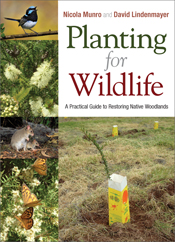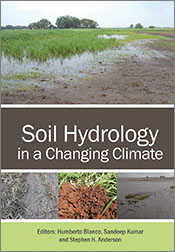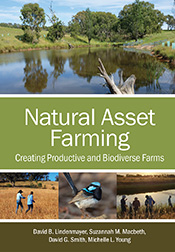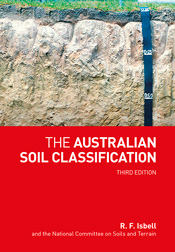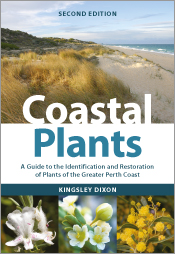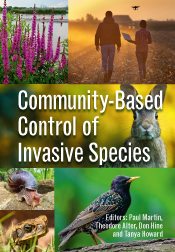Planting for Wildlife
A Practical Guide to Restoring Native Woodlands
By: Nicola Munro, David LindenmayerProvides the latest information on restoring woodlands, with particular emphasis on plantings as habitat for wildlife.
Across Australia, woodlands are increasingly being planted on formerly cleared or semi-cleared land. Such revegetation efforts can improve biodiversity of farm wildlife, enhance aesthetics of the landscape and even boost farm production. + Full description
Planting for Wildlife provides the latest information on restoring woodlands, with particular emphasis on plantings as habitat for wildlife. Key topics include why it is important to revegetate, where to plant, how to prepare a site, how to maintain and manage plantings, and how they change over time.
The authors focus on the south-eastern grazing region where domestic livestock grazing and/or cropping have been prominent forms of land use. These agricultural landscapes have suffered widespread land degradation and significant losses of biodiversity. Revegetation is a vital step towards solving these problems.
The book includes high-quality colour photographs to support the themes discussed. It is ideal for natural resource managers; field staff from state and federal government agencies; landholders; hobby farmers; vineyard owners; naturalists interested in birds, conservation and revegetation; as well as policy makers in regional, state and federal government.
- Short descriptionNews
No longer available in a print edition.
Reviews
"This wonderful book has many gold nuggets of information and is well worth buying."
Maria Gibson, The Victorian Naturalist, Vol 130 (2), pp.90-91, April 2013
"Planting for Wildlife again ticks all the boxes in delivering a concise and generously illustrated summary of years of research into planting trees on farms."
Deborah Metters, Land for Wildlife South East Queensland, pp. 13, April 2013
"What a super little book! It is a beautifully produced, user friendly guide to restoring woods in south-eastern Australia. This gem of a book achieves its objective brilliantly; its simplicity and clarity makes you want to get out there and "get stuck in". My only criticism is that this manual is only available for south-eastern Australia. I am sure, however, that other regions of the world will quickly follow with their own restoration ecology manuals in a similar format. "
R.H. Marrs, Biological Conservation 148 (2012), p. 219
"While small in size it is an excellent and non-threatening resource for natural resource managers, field staff from government agencies, landholders, hobby farmers, and anyone with an interest in conservation and revegetation."
R.G. Richardson, Meredith, Plant Protection Quarterly Vol.26(4) 2011, p. 153
"How, why and where to revegetate land are key considerations for land managers prior to commencing a revegetation program. This book will assist land holders to answer those questions and gives guidance on practical revegetation issues such as flora species choice; size and location of revegetation site; and likely increased biodiversity outcomes."
Alison J Beaty, Australian Organic Producer, Summer 2011/2012
Details
ePDF | August 2011ISBN: 9780643103139
Publisher: CSIRO Publishing
Available from eRetailers
ePUB | August 2011
ISBN: 9780643103146
Publisher: CSIRO Publishing
Available from eRetailers
Features
- Latest scientific information supporting new information and recommendations in the book
- Engaging style
- Brevity and clarity
- Extensive direct connections with Catchment Management Authorities and landholders
- Many key information boxes
- High quality photographs
Contents
Chapter 1 Why revegetate?Chapter 2 Where to revegetate
Chapter 3 Layout and composition of a planting
Chapter 4 How to revegetate
Chapter 5 How to maintain and manage a planting
Chapter 6 How a planting changes over time
List of recommendations
Further reading
Index
View the full table of contents.
Authors
Nicola Munro is a Post-doctoral Researcher at The Australian National University. She has recently completed her PhD thesis on revegetation programs in south-eastern Australia and published a series of internationally peer-reviewed articles from that work. She has been actively involved as a researcher and on-ground practitioner in revegetation programs for more than a decade.David Lindenmayer is a Research Professor at The Australian National University. He has worked in woodland environments, including revegetation projects, since 1997 and has led a research team of many outstanding students and other researchers for much of that time. He has published 30 other books as well as over 700 scientific publications. A number of these publications have addressed issues associated with the conservation and management of revegetated areas, including the responses of birds, mammals, reptiles and plants to planting programs. He has worked on Australian biodiversity for more than 25 years.

